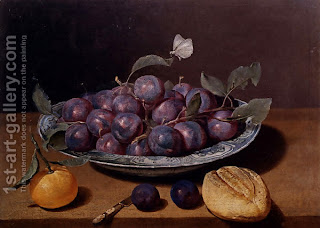All flour offerings that are made in a sacred vessel require three applications of oil: pouring, mixing, and the initial placement. This teaching needs explanation. It lists the oil applications in the reverse order. First, some of the oil is put into a vessel and the flour is placed on it. The lukewarm water is added and the ingredients are kneaded. Second, more oil is introduced and mixed in. Third, one pours in the remaining oil to fulfill the mitzvah of pouring. Why does the teaching mention “sacred vessels?” - To exclude an oven, which this teacher does not consider a sacred vessel.
When exactly is the oil mixed in as the second step? Rabbi Yehudah the Prince says that this is done after the offering has been made into loaves, but the Sages say that one mixes the oil in while it is still flour.
There are two oven-baked offerings, challot and wafers. Challot require mixing with oil, whereas wafers are smeared with oil after baking. Smearing is done in the form of the Greek letter chi, and the remaining oil is consumed by the kohanim.
Art: Jacques Linard - Still Life Of A Plate Of Plums And A Loaf Of Bread
Monday, May 23, 2011
Subscribe to:
Post Comments (Atom)


No comments:
Post a Comment